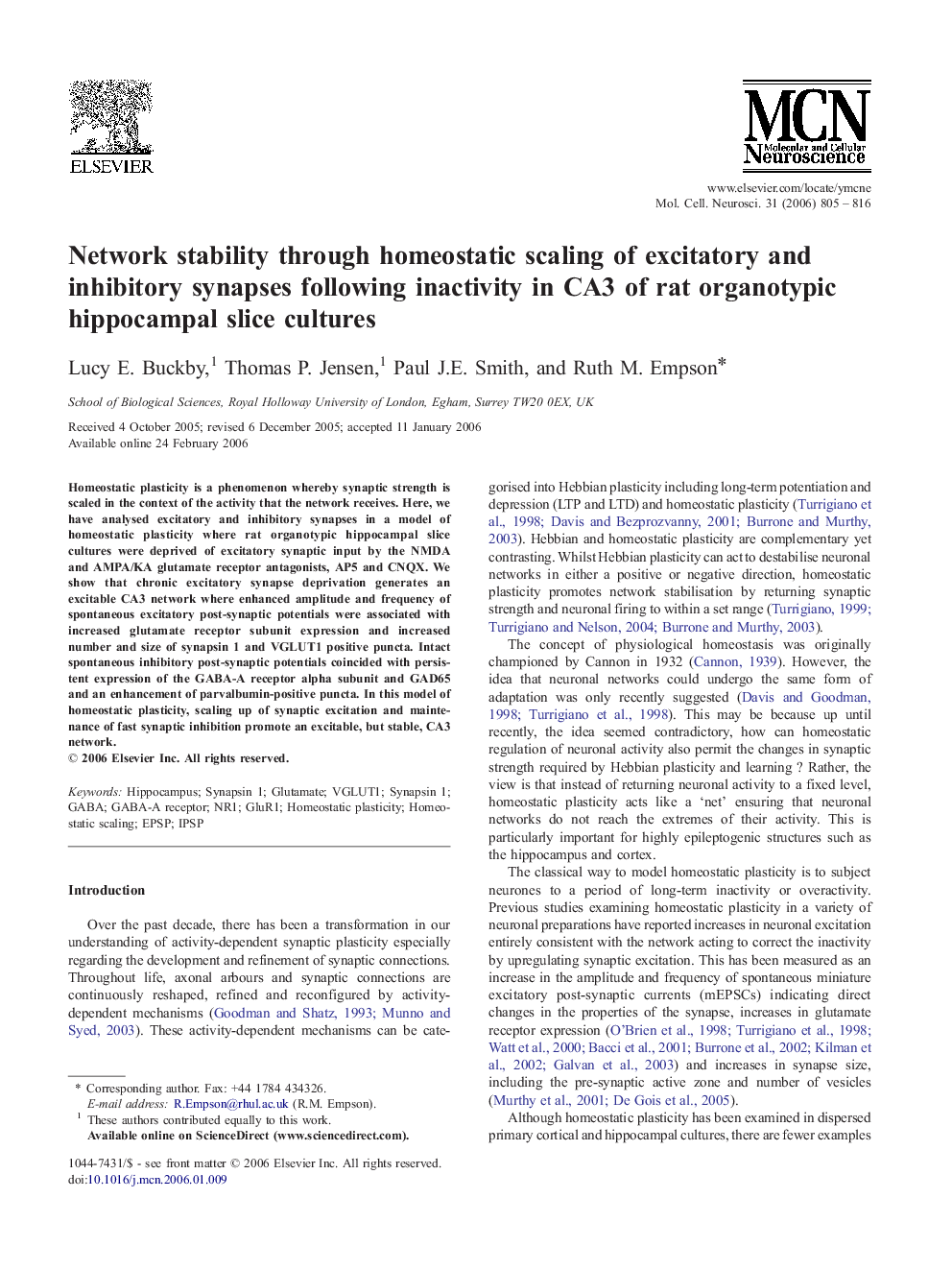| Article ID | Journal | Published Year | Pages | File Type |
|---|---|---|---|---|
| 2199498 | Molecular and Cellular Neuroscience | 2006 | 12 Pages |
Homeostatic plasticity is a phenomenon whereby synaptic strength is scaled in the context of the activity that the network receives. Here, we have analysed excitatory and inhibitory synapses in a model of homeostatic plasticity where rat organotypic hippocampal slice cultures were deprived of excitatory synaptic input by the NMDA and AMPA/KA glutamate receptor antagonists, AP5 and CNQX. We show that chronic excitatory synapse deprivation generates an excitable CA3 network where enhanced amplitude and frequency of spontaneous excitatory post-synaptic potentials were associated with increased glutamate receptor subunit expression and increased number and size of synapsin 1 and VGLUT1 positive puncta. Intact spontaneous inhibitory post-synaptic potentials coincided with persistent expression of the GABA-A receptor alpha subunit and GAD65 and an enhancement of parvalbumin-positive puncta. In this model of homeostatic plasticity, scaling up of synaptic excitation and maintenance of fast synaptic inhibition promote an excitable, but stable, CA3 network.
